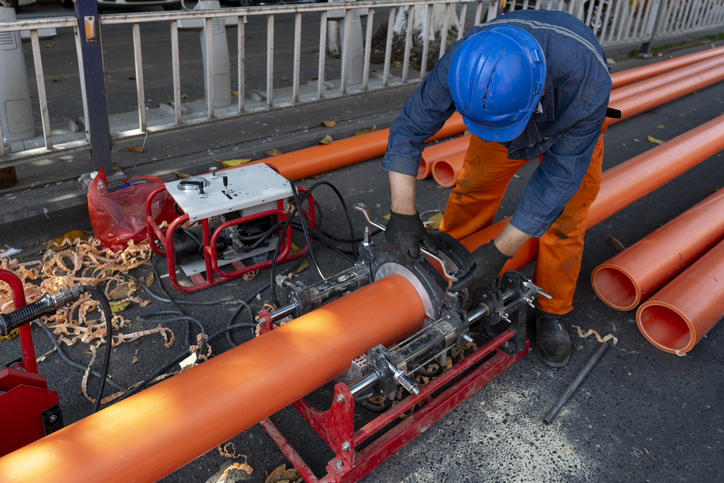Introduction
Traditional sewer repair methods often involve heavy digging, torn-up landscapes, and prolonged disruption. But thanks to advances in plumbing technology, homeowners and businesses now have access to trenchless sewer pipe repair methods that solve pipe problems with far less mess. These techniques restore broken or aging sewer lines without the need for full excavation, preserving lawns, sidewalks, and foundations while reducing downtime. Whether dealing with tree root invasion, pipe corrosion, or misaligned joints, trenchless options provide efficient alternatives to digging. Understanding how these methods work helps property owners choose smarter solutions that balance performance, cost, and minimal property damage.
Trenchless Sewer Repair: Methods That Minimize Digging
1. Pipe Lining: Creating a New Pipe Within the Old One
Also known as cured-in-place pipe (CIPP) lining, it involves inserting a bendable resin-saturated liner into the damaged pipe. Once in place, the liner is inflated, hardening into a new pipe inside the old structure. The result is a durable, corrosion-resistant layer that restores flow and seals cracks. CIPP works best for pipes that have minor fractures, small holes, or corrosion, but are still structurally sound. It avoids the need for trenching while extending the life of the existing pipe. Technicians often use video inspection tools to map out the repair zone and ensure proper liner placement.
2. Pipe Bursting: Replacing Old Pipes With New Ones Underground
Pipe bursting is ideal when the existing sewer line is too damaged for relining. In this method, a conical bursting head is pulled via the existing pipe, breaking it apart while pulling in a new high-density polyethylene (HDPE) pipe behind it. This technique requires two small access points—one for insertion and one for pulling—but avoids a full trench. Pipe bursting is especially useful for replacing clay, cast iron, or severely corroded lines. It results in a strong, long-lasting replacement pipe without disturbing driveways, gardens, or hardscapes above the sewer line. It’s commonly used for both residential and commercial projects.
3. Slip Lining: Sliding a Smaller Pipe Into the Existing Line
Slip lining involves inserting a slightly smaller pipe—usually made of plastic—into the damaged one. While not as modern as CIPP or pipe bursting, it remains a valid technique in some cases. The new pipe is pushed or pulled into place, then the ends are sealed, and the gap between the two pipes is grouted. Though it slightly reduces the internal diameter of the pipe, slip lining can still restore functionality and extend the pipe’s life. It works best when minimal structural damage exists and where flow reduction is not a concern, such as large-diameter storm drains or low-demand sewer lines.
4. Spot Repairs: Fixing Localized Damage Without Replacing Entire Lines
Sometimes, only a section of the sewer line is affected by cracks, intrusions, or joint separations. In these instances, trenchless sewer repair using spot repairs provides a focused fix without relining the entire pipe. Technicians insert a sectional liner—also called a patch—into the damaged area and cure it in place using air pressure or heat. The patch bonds securely to the pipe’s inner wall, sealing off leaks and reinforcing weak points. This approach is ideal when inspections confirm that the damage is localized rather than widespread. It’s a fast, cost-effective method that avoids major digging for minor issues.
5. Hydro Jetting and Inspection as Supportive Tools
While not repair methods themselves, hydro jetting and camera inspection support various types of trenchless sewer repair. Hydro jetting removes debris, grease, and roots before repairs begin, leaving the pipe clean and ready for lining or bursting. The high-pressure water jet scrubs the pipe walls without harsh chemicals, restoring water flow and revealing hidden damage. Camera inspection allows technicians to pinpoint the exact location and nature of the problem with real-time visuals. These tools enhance the precision and success rate of trenchless procedures, reducing disruption to the property. They also give homeowners valuable insight into pipe condition even without outward signs of trouble.
Trenchless sewer pipe repair methods have transformed how professionals address underground plumbing issues. From CIPP lining and pipe bursting to slip lining and spot repairs, these methods reduce disruption while offering long-term reliability. Choosing the right method depends on the condition of the existing pipes, the location of the damage, and the budget. With support tools like camera inspections and hydro jetting, technicians can diagnose problems and implement the best solution without excavation. By adopting trenchless strategies, homeowners can maintain their plumbing systems more efficiently and avoid the headaches of traditional digging.
Conclusion
Uncover advanced Trenchless Sewer Pipe Repair Methods with Plomero en Phoenix. Call us at (602) 730-4663 today to fix underground plumbing issues without the mess—quick, affordable, and built for lasting results.
📌 Plumber in Phoenix – Your Trusted Experts for Fast, Reliable Plumbing, Heating, and Air Conditioning Solutions!


